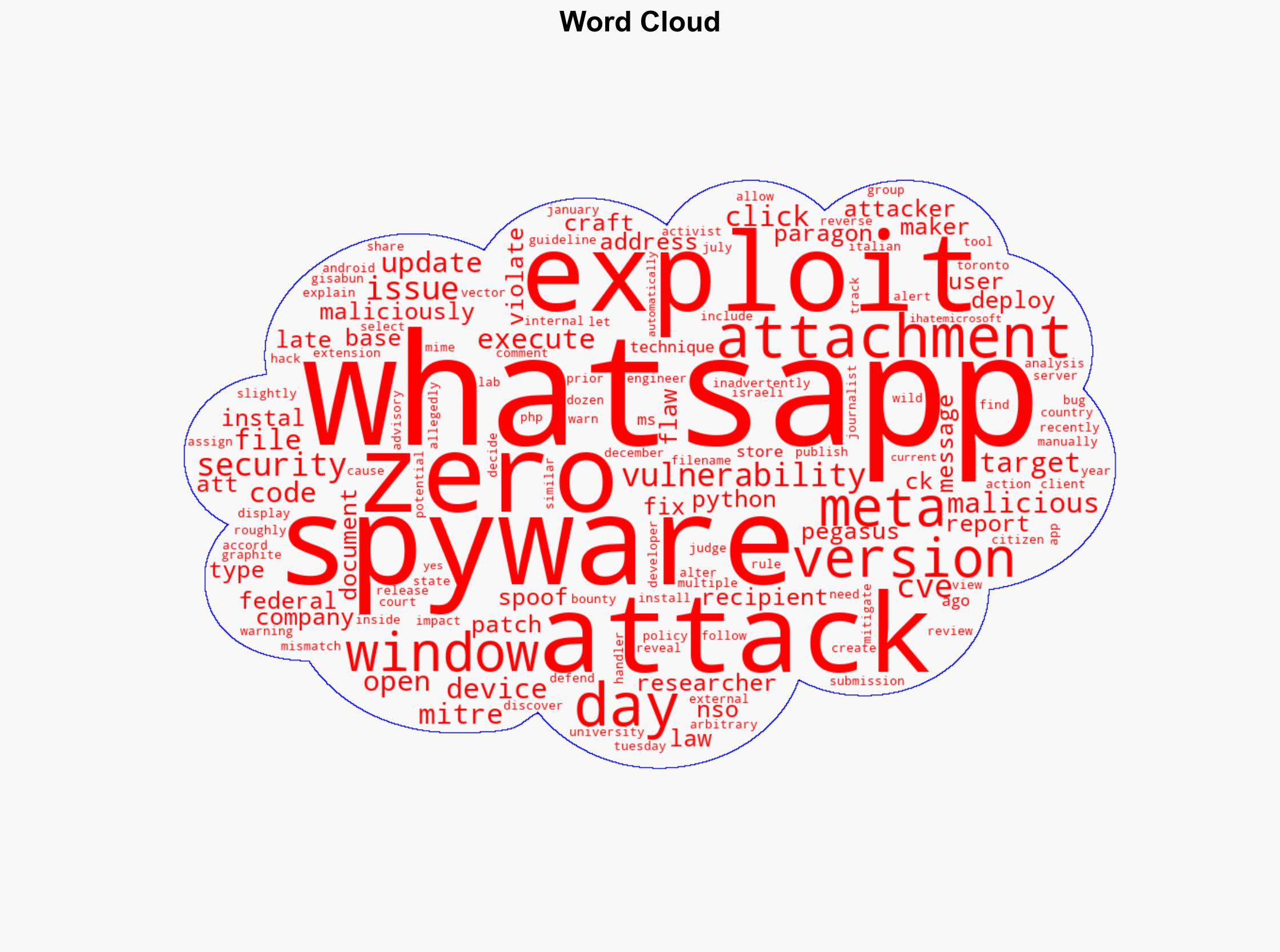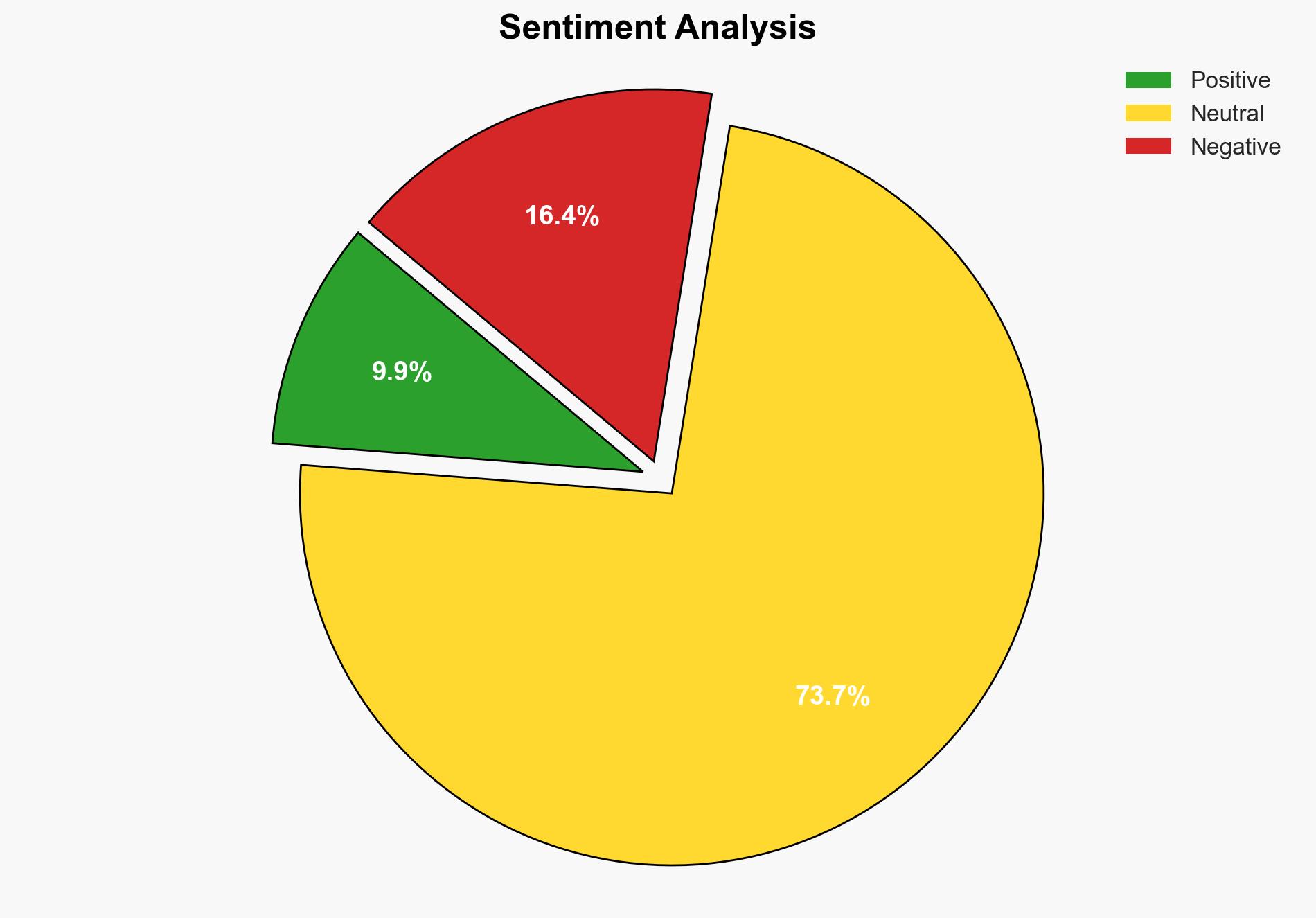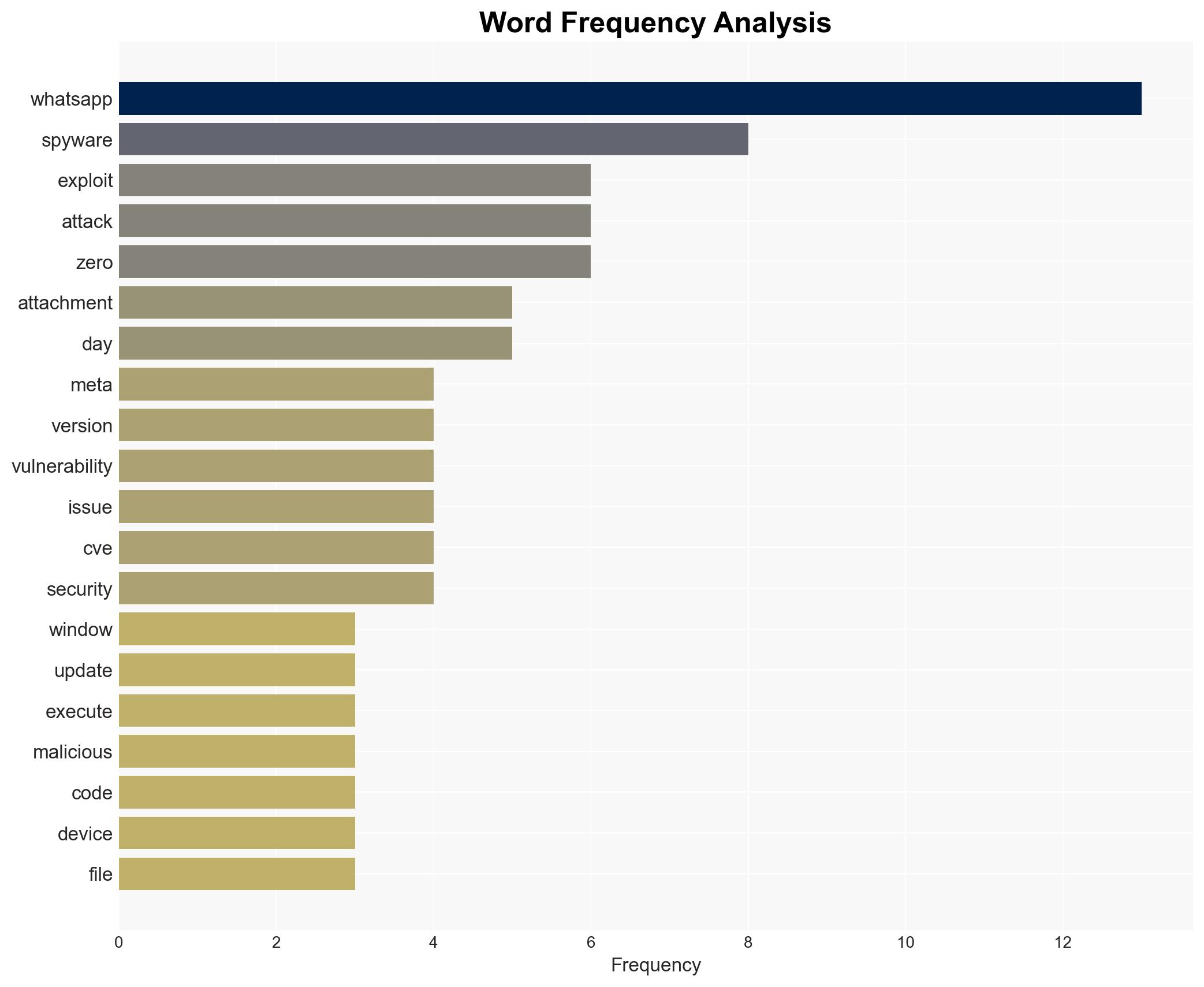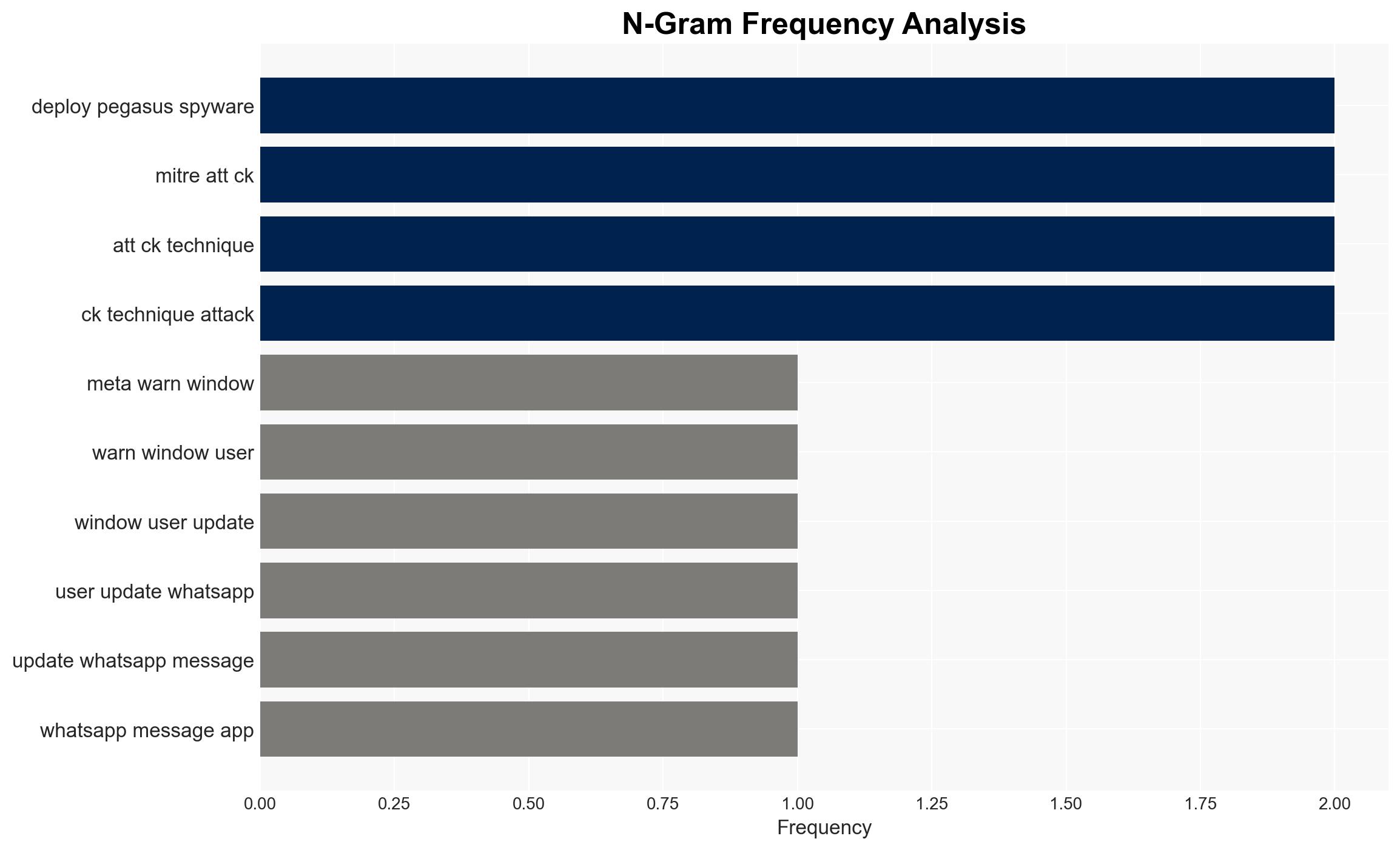WhatsApp flaw can let attackers run malicious code on Windows PCs – BleepingComputer
Published on: 2025-04-08
Intelligence Report: WhatsApp flaw can let attackers run malicious code on Windows PCs – BleepingComputer
1. BLUF (Bottom Line Up Front)
A critical vulnerability in WhatsApp allows attackers to execute malicious code on Windows PCs. This flaw, identified as CVE, affects versions of WhatsApp prior to the latest patch. The vulnerability is exploited through a maliciously crafted file that, when opened, can execute arbitrary code. Immediate updates and patches are recommended to mitigate this risk.
2. Detailed Analysis
The following structured analytic techniques have been applied for this analysis:
General Analysis
The vulnerability in WhatsApp stems from a mismatch between file type and file handler, allowing attackers to send a crafted file that executes code when opened. This issue is particularly concerning due to its potential use in zero-click attacks, as demonstrated by previous spyware deployments. The flaw was reported by an external researcher and has been addressed in the latest update.
3. Implications and Strategic Risks
The exploitation of this vulnerability poses significant risks to user privacy and security. It could lead to unauthorized access to sensitive information, impacting national security and economic interests. The use of spyware, such as Pegasus, in exploiting similar vulnerabilities highlights the potential for widespread surveillance and data breaches.
4. Recommendations and Outlook
Recommendations:
- Encourage all users to update to the latest version of WhatsApp immediately to mitigate the vulnerability.
- Implement stricter security protocols and regular audits to identify and address potential vulnerabilities.
- Enhance user awareness regarding the risks of opening unsolicited attachments.
Outlook:
In the best-case scenario, rapid patch adoption will prevent further exploitation. The worst-case scenario involves continued exploitation by advanced threat actors, leading to significant data breaches. The most likely outcome is a gradual reduction in risk as updates are deployed, but vigilance remains necessary.
5. Key Individuals and Entities
The report mentions significant individuals and organizations such as Meta, Citizen Lab, and NSO Group. These entities are involved in the identification, reporting, and exploitation of the vulnerability.





